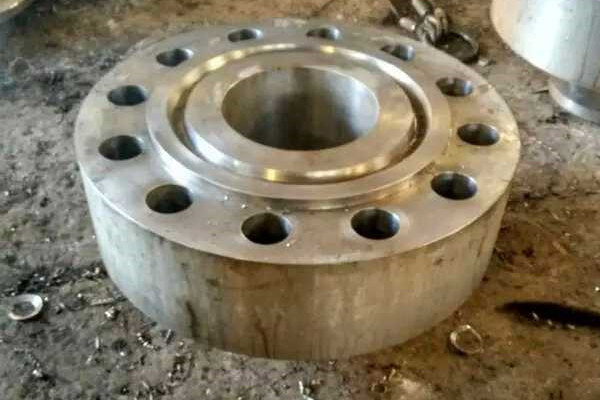Large free forgings and high alloy steel forgings are mainly made of steel ingot, which can be divided into large ingot and small ingot according to the specification of steel ingot. Generally the mass is greater than 2t ~ 2.5t, diameter is greater than 500mm ~ 550mm ingot called large ingot, other is small ingot.
Press forging ingot forging used before the temperature of the heating furnace when loading is divided into cold ingots (generally for room temperature) and hot ingot (generally greater than room temperature) for cold ingots at below 500 ℃ heating plastic is poorer, and formed by an ingot in crystallization process and residual stress and temperature stress direction, all kinds of tissue defects will cause stress concentration, if a misalignment heating specification, easy to cause crack. Therefore, in the low temperature stage of cold ingot heating, the loading temperature and heating speed should be limited.
Forging heating large ingot with multi heating specifications, due to its large section size, in the center of the tensile stress is very large, coupled with low ingot strength, poor plasticity, so the forging temperature stress is easy to crack when heating, therefore, the furnace temperature can not be too high, heating speed should also be carried out slowly. For example, for carbon structural steel and alloy structural steel, the furnace temperature is generally 350℃ ~ 850℃, the ingot size is small, the furnace temperature is large, and the insulation. For alloy steel, such as high speed steel, high chromium steel is easy to crack when heated, the furnace temperature should be controlled at 400℃ ~ 650℃. When the temperature is higher than 850℃, the ingot can be heated at a faster speed, but not too fast, to avoid the occurrence of forgings inside and outside the temperature difference is too large. For example, forgings of carbon structural steel and alloy structural steel allow temperature difference between 50℃ and 100℃.
When heating small steel ingot, because of its small section size, the residual stress and the temperature stress caused by heating are not large, the heating speed can be faster, therefore, for carbon cable steel and low alloy steel ingot, a section of rapid heating specification is used in forging. For small high-alloy steel ingot, because of its low temperature thermal conductivity is poor, and large cold ingot heating, also use multi-stage heating specifications, forging blanks can be installed at 700℃ ~ 1000℃ temperature furnace.
In order to shorten the heating time and save fuel, large ingot from the steel workshop after stripping, directly sent to the forging workshop furnace heating, this kind of steel ingot called hot ingot. When hot ingot furnace charging, the surface temperature of 550 ℃ ~ 650 ℃, due to the hot ingot in good plastic state, temperature stress is small, so the furnace temperature can be improved, depending on the ingot size and material is different, can be in commonly 800 ℃ ~ 1000 ℃ furnace, small ingot furnace temperature can be unlimited, after charging can be one of the largest heating heating speed.
Post time: Apr-14-2022

